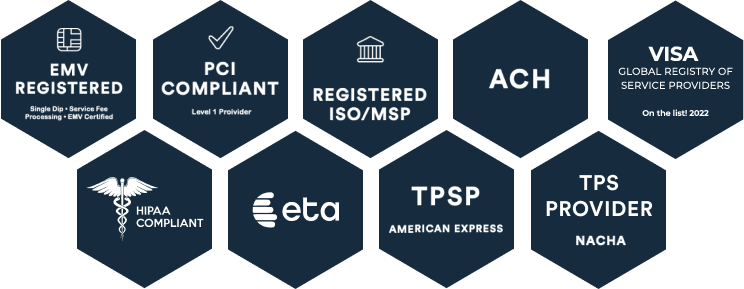Adding a new payment option at checkout? Download our free guide: How to Improve Adoption of Your New Digital Payment Option >
For over 70 years, consumers have utilized credit cards as part of their billing and payment experience. And in recent years, credit card usage has only increased. On average, U.S. citizens have at least three credit cards each and nearly 90% of all consumers have at least one credit card.
Consumers do more than sign up for credit cards—they use them! Nearly 60% of consumers report that they prefer using credit cards for purchases and payments. And cash payments are on the decline—representing only 19% of all transactions in the United States (80% of which are for payments less than $25.00).
As a government entity accepting payments from your constituents, it’s critical that you offer the payment method clearly preferred by consumers of all ages—credit cards. By offering credit cards as an option for payments, you’re not only keeping up with modern-day payment experiences, you’ll improve the conversion rate for payments online (reducing paperwork, resources’ time, and budget).
Whether you are implementing a credit card checkout process right now or you’re working on adoption in your county or state, consider following these best practices to increase credit card payments for your government services:
Create a single page for your online checkout experience
Reduce friction for your constituents as they make their payments online. With a single checkout page, you can offer a simple, easy-to-navigate process. Some experts suggest removing navigation links that could drive payers away from the checkout page while others recommend simple, straightforward forms with a single button—to submit the payment.
A bonus tip for increasing credit card payments from your constituents—keep the payment page on your site. Don’t send customers to another platform or page at checkout. Instead, keep them on the same page (and on your site) to improve conversion.
By offering a single checkout page, you’ll improve the constituent payment journey. A single checkout page can:
→ Increase the speed of the checkout experience for your constituents
→ Reduce abandonment rates and increase online payment adoption
→ Improve the user-friendliness of an online payment experience
Only ask for critical information at checkout
Longer forms at checkout can create overwhelm and frustration. And if your constituents are unsure of an online payment experience, answering multiple questions or filling out a long checkout page reduces the chances for higher adoption. Instead, ask for only critical information at checkout.
Where possible, remove fields that aren’t necessary for a credit card checkout and consider auto-fill tools that prefill personal information, credit card numbers, and expiration dates—reducing the time your constituents spend actually filling out the checkout form.
By only asking for critical information at checkout, you’ll improve the constituent payment journey and improve online payment conversions. A shorter checkout form can:
→ Decrease abandonment at checkout
→ Reduce constituent frustration with long forms
→ Increase speed-to-checkout
Offer multiple payment options
Your constituents want choices, and that includes payment options at checkout. In fact, 56% of consumers expect multiple payment options. One way to meet this expectation?
Make sure you are offering all major credit cards (American Express, Visa, MasterCard, and Discover) as payment options at checkout—especially for those paying on a mobile device. Autofill on mobile devices encourages credit card payments versus the time it takes for constituents to find and fill out their bank account and routing numbers for an ACH payment.
Beyond credit card payments, consider other payment platforms, such as PayPal or Venmo. These platforms are growing in popularity and many are preferred by consumers. For example, PayPal transactions report 70% higher checkout conversions than non-PayPal transactions online. Make sure your payment options are clearly labeled at checkout (both online and in person) with correct legal signage, digital decals, and more.
By offering multiple payment options at checkout, you’ll keep up with growing constituent demands for an online payment experience. Multiple payment options will:
→ Showcase your constituent-first payment experience
→ Meet the growing demand for credit card and other payment platform options
→ Make checkout easier for constituents
Make sure your team is prepped for any questions
Whether you’re transitioning your constituents to an online payment experience or you’re expanding your online payment options, it’s critical that you prep your team for questions. Some constituents will run into issues as they try to make payments online, and a well-prepped team can help them navigate your site, payment options, and follow-up messages via email.
Train your team to walk confused constituents through the online process for each payment type—credit cards, other payment platforms, bank account transfer, etc. Consider adding FAQs on your site to reduce incoming calls with questions. And if you find you’re answering the same questions over and over again, it’s time to reassess your online payment experience and address the common problems (a clearer Call to Action, different color Submit button, a shorter form, etc.).
By prepping your team for any online payment questions from your constituents, you’ll improve the customer service experience for both your staff and your citizens. A team prepared to answer online payment questions will:
→ Reply to constituent concerns faster and with more accurate information
→ Improve constituent satisfaction with online payments
→ Encourage online payments vs. physical, manual payments
Adding a new payment option at checkout? Download our free guide: How to Improve Adoption of Your New Digital Payment Option >






